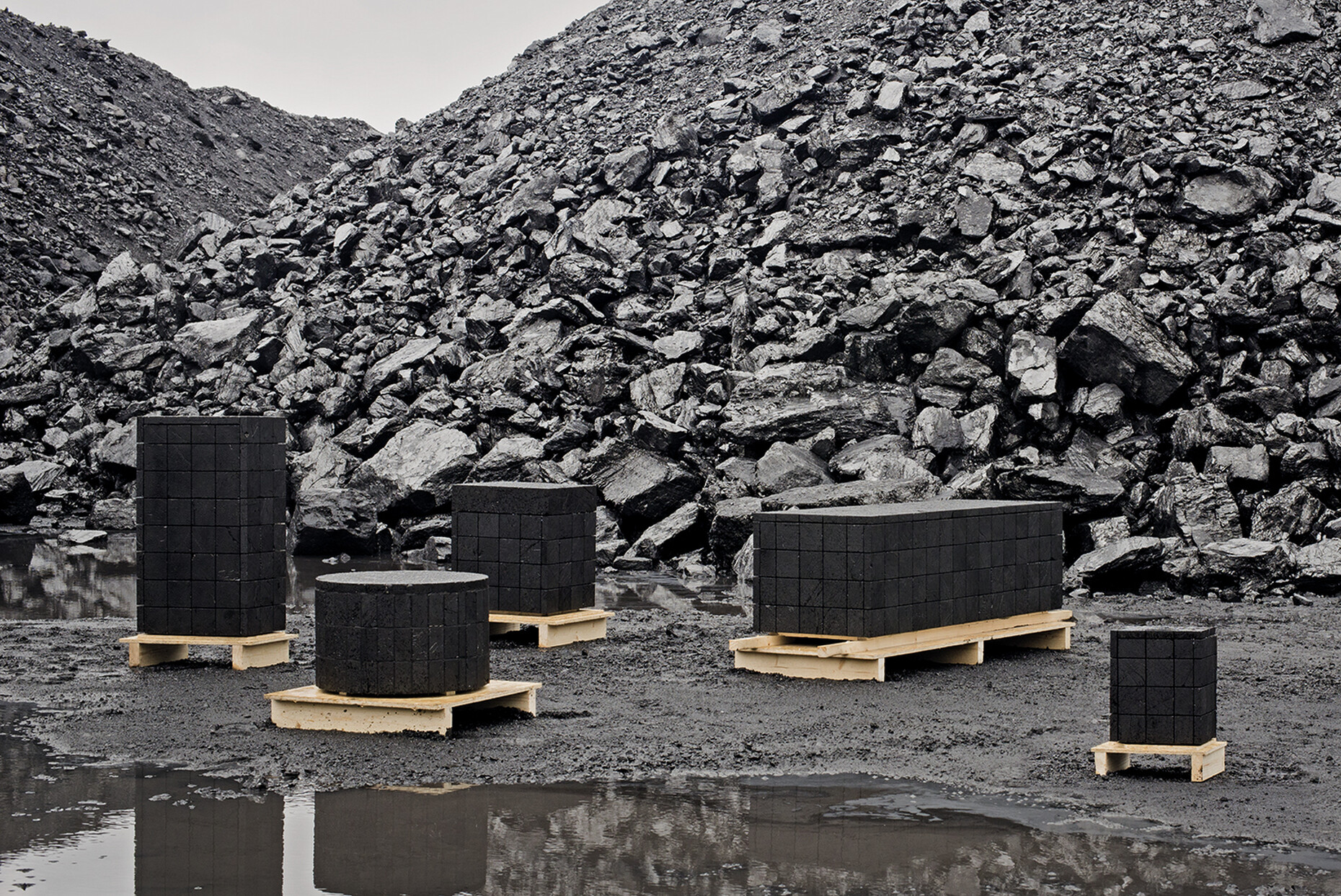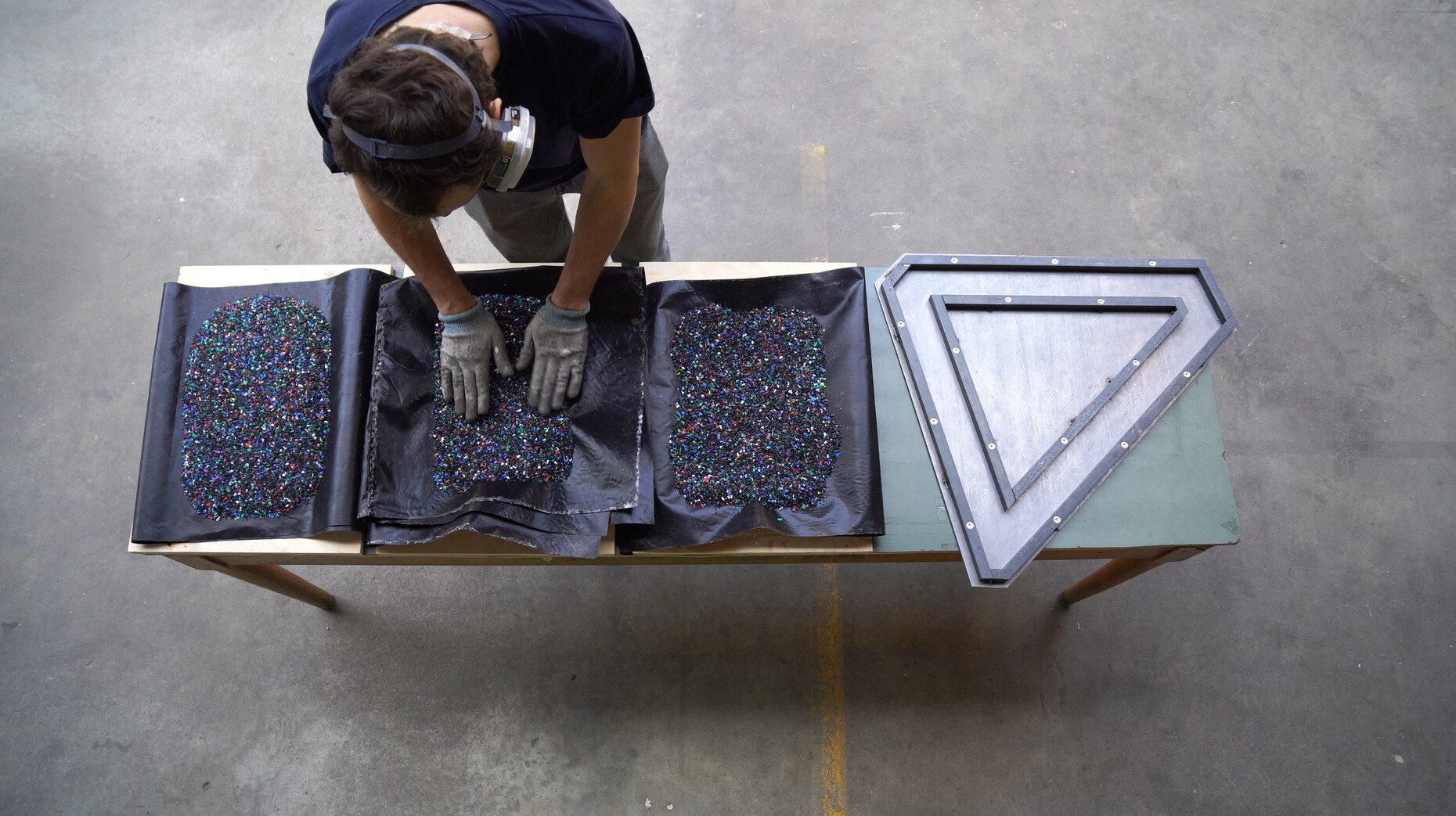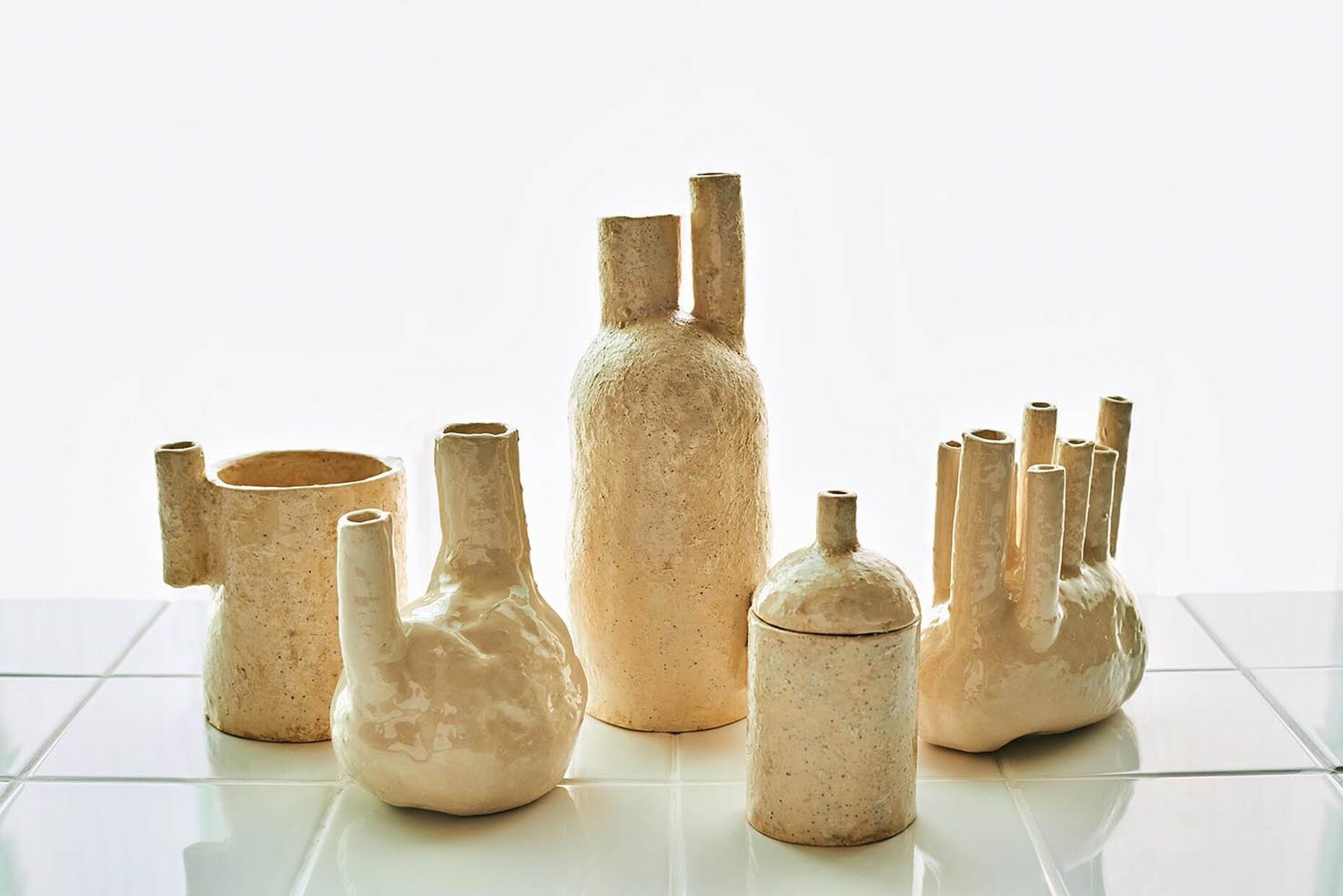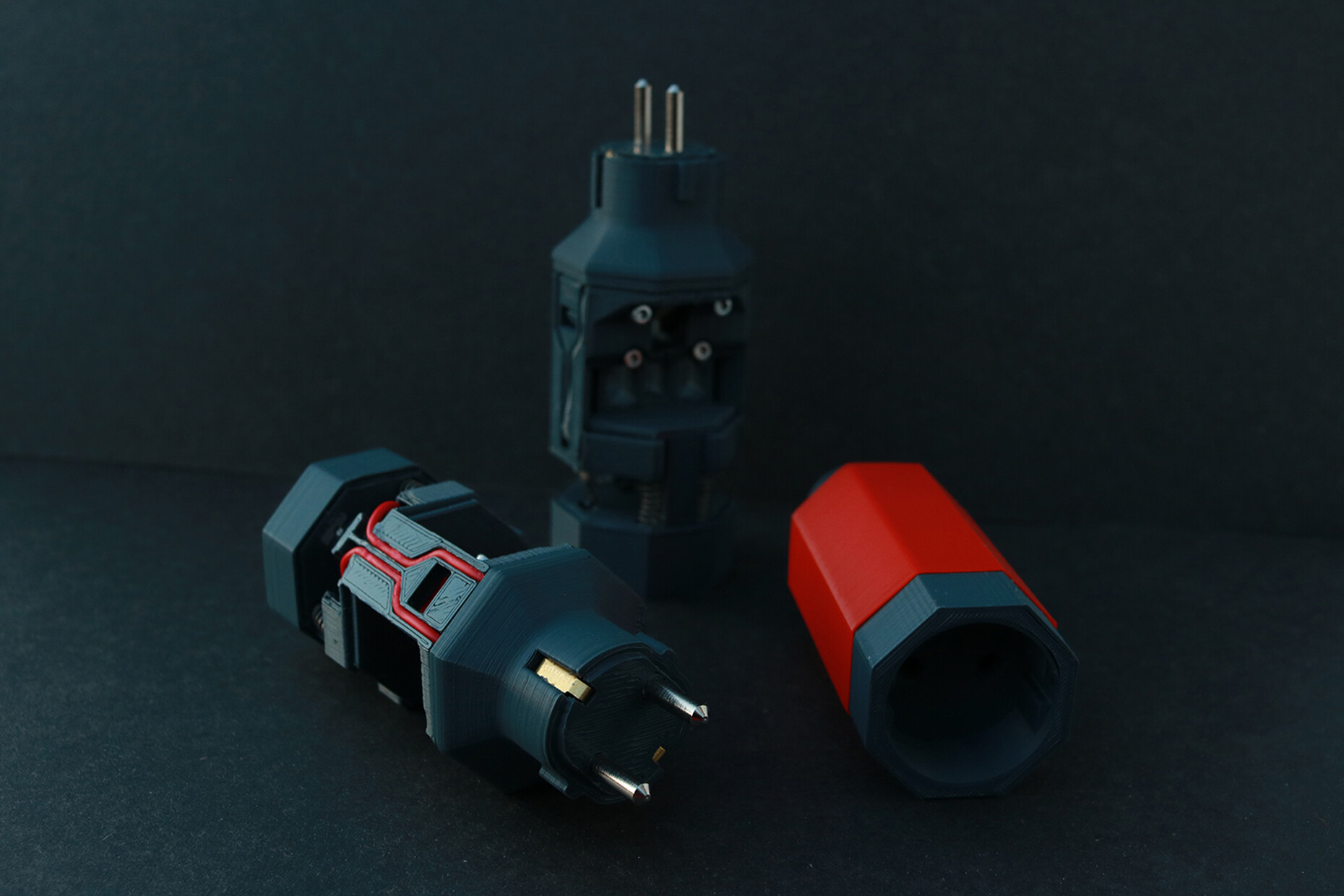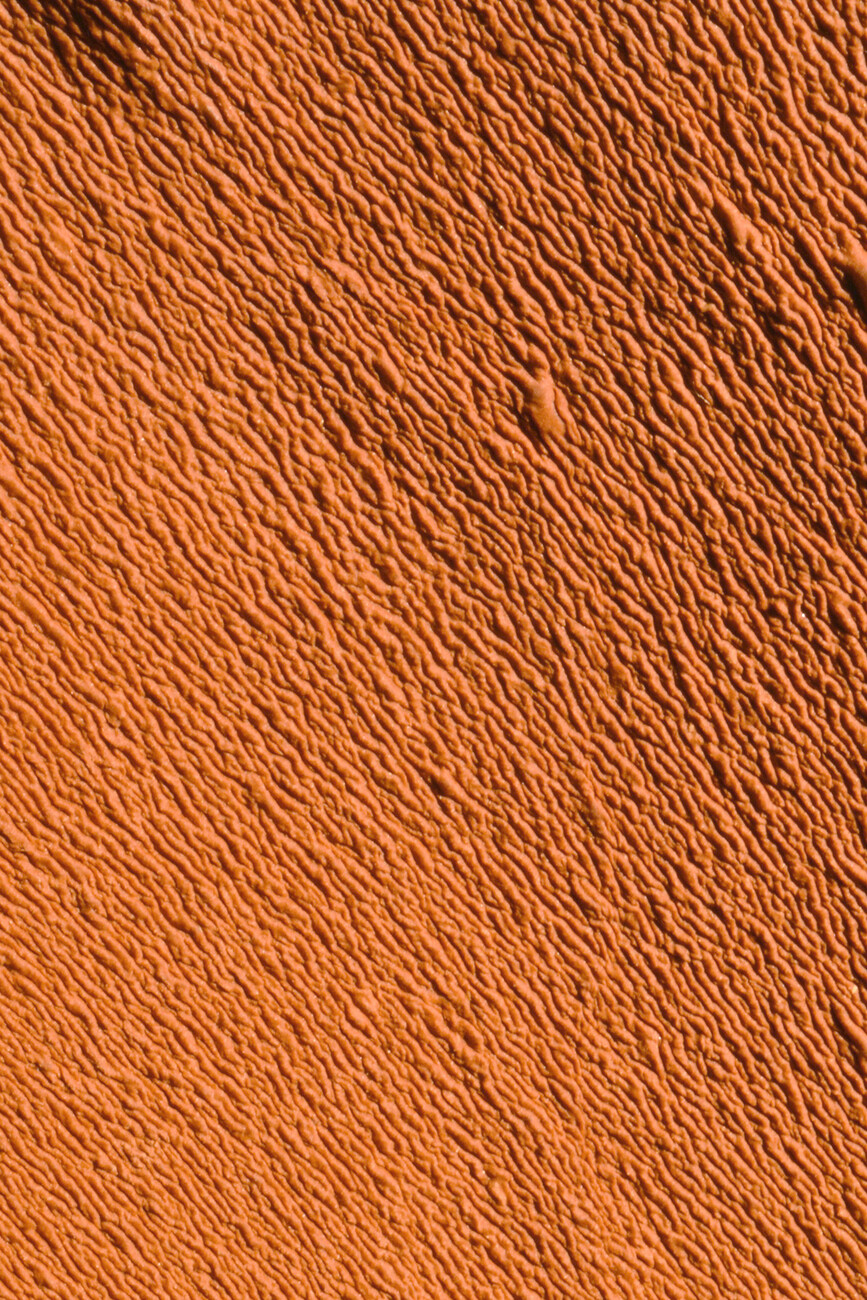The materialists
“If not us, then who?”The motto of this year’s Dutch Design Week (DDW) conveyed a certain urgency. An urgency that many will be able to appreciate given the current state of the world. But with this rhetorical question the festival also expressed an ambitious claim, namely that design can save the world. And that designers need to accept their responsibility, if you please. But never fear, they have delivered. And this feeling of urgency was palpable in many instances for visitors to the festival. It is especially the young designers who feel driven by the big questions of our time: What does the future hold for us? What can we learn from the present day? Admittedly, the answers are not always on the same scale as the questions, but you have to start somewhere. And many young designers adopted a hands-on approach to materials – with projects that reexamine materials or address the recycling of used materials.
Take Tim Teven and his Bachelor-degree project “Recycling Reject,” for example: Like all the other graduates from the Design Academy Eindhoven, he presented his final project in the G18 Graduation Show organized by the Academy. Held this year in a former milk factory, it featured 208 projects by 185 graduates. Visitors were well advised to allow at least three to four hours for this jamboree, especially as the show is traditionally one of the highlights of the Design Week. Tim Teven presented a method that allows unrecyclable paper fibers to be put to use. Indeed, after being recycled five to seven times the quality of the fibers is too poor to make paper out of them again. Instead, Teven uses the fibers as a basic component for building material, first shredding them and then pressing them into blocks using adhesives and pigments.
For his own Bachelor’s project, which is based in Mexico City, Thomas Hoogewerf took on the material with currently the worst image, namely plastic. He produced a bicycle prototype from plastic waste collected there, a sturdy three-wheel vehicle that can also be used to transport heavy loads. His idea: the bicycle is made locally in Mexico and is constructed so that it can be easily repaired or have parts replaced. Sabīne Silarāja pursues a similar approach with her Bachelor-degree piece “Unplug!”– an adapter for a power outlet that is 3D-printed from local waste plastic and works entirely without electronics. On the contrary, after a certain time it cuts off the electricity supply mechanically. This results in irritating light-emitting diodes being switched off, saving electricity. The graduate wants to show that alternatives exist to the mass-produced and not very sustainable electronic devices that we regularly use without thinking.
The young materials experts are not only developing ideas for the recycling and repair industry, however. Many of them are also experimenting with materials to find new applications – and noticeably often for natural substances. Jesper Eriksson, a young designer from London, opted for a highly conceptual approach. In his project “Coal: Post-Fuel”he explores the symbolic properties of coal and is exhibiting his findings during the DDW in the downtown design center “Kazerne.”The highly aesthetic objects made from shiny black coal – floor coverings and furniture items – represent his attempt to give this dirty fossil fuel a new, desirable image for the post-fossil age. Other designers are exploring organic waste products. Sinae Kim, for example, has produced a glaze for ceramics from human urine. In the New Material Award exhibition, Basse Stittgen showed objects made from cows’ blood from the slaughterhouse.
Nonetheless, many of this year’s graduates from the Eindhoven academy tend to rely on materials of plant origin. Ruth Klücker’s converted Mercedes van stands in the forecourt of the exhibition halls. She uses it to drive to Europe’s coasts to collect and process seaweed. After all, it is one of the few plants from the sea to offer such diverse uses for mankind. Klücker’s work “Drive for Seaweed”seeks to remind people of its potential and includes tasty seaweed treats for visitors. Other plants with potential? Heather, for example, which graduate Salvo Caltabellotta uses to make textiles. Or the date palm, whose wood Dan Porat wants to use for furniture or as a construction material. Although date cultivation produces large amounts of wood, until now it has been considered a waste product and thrown away. In his project Don Kwaning has discovered new qualities about a well-known material, namely linoleum. For his Bachelor’s project “Lino Leather”he experimented with its manufacture and developed a softer, more flexible type of linoleum. It looks almost like leather and could, for instance, be used in place of wallpaper.
In the middle of the digital age, young designers are frequently turning to the material aspect, to things you can touch, process and transform using what seem like almost alchemic methods. Naturally, clicking, whirring and beeping could also frequently be heard in the DDW presentations; after all, digital media and processes are part of everyday reality for up-and-coming designers. And they are adept at using them as tools. But for many young designers, the hope of a better future very clearly lies in more tangible things.
